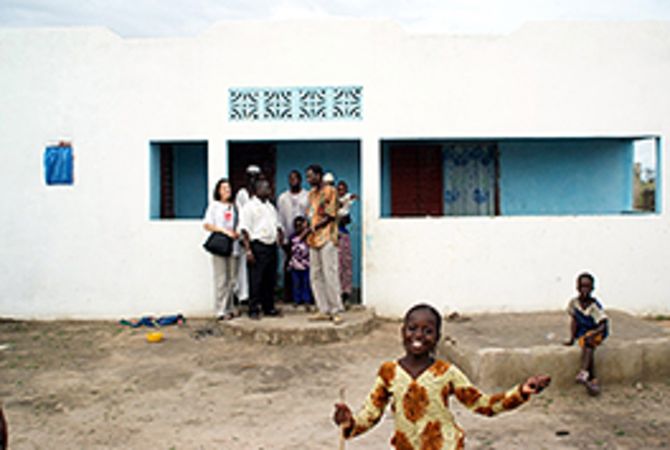Starting point
In Senegal around twelve million people live in an area of 196,772 square kilometres.
In 2009 “only” 271 persons fell sick of leprosy, among them 36 children (13%). This high percentage of children gives reason to suppose that the transmission of the disease is faster than could be assumed in view of the relatively low number of new cases. This assumption is supported by the high number of patients (48) who show visible disabilities when being diagnosed for the first time.
Obviously, one of the reasons for the high number of disabled patients is their hiding themselves. This is typical in a country where, until only a few years ago, leprosy patients had been forced to live in leprosy colonies. Even today these “leprosy villages” are not found in any map, the inhabitants are still fighting for their legitimate recognition and equality of rights.
General project aims
In Senegal DAHW has been supporting the national leprosy control programme and a programme for social rehabilitation in ten leprosy villages since 1973. In 1979 DAHW opened an own office for a better coordination in the capital Dakar.
- Prevention of disabilities and health education with the aim to reduce further the infection rate and to finally overcome the stigmatisation of the patients
- Village development, school programmes, vocational training, micro-credit programmes
- Inclusion: the family members of leprosy patients are trained how to deal with disabled people
Activities
In Senegal DAHW mainly supports former leprosy patients and people with disabilities. The change of the support from the former approach of mere aid to a more active support of self-help (CBR) continues. One of the steps to reach this aim is the training of family members how to deal with disabled people. Last year 23 CBR committees were founded. In these committees the representatives of people with disabilities and of the community cooperate and coordinate the individual self-help groups.
After the heavy rain falls in the past year, DAHW additionally invested in the reconstruction of 50 destroyed houses in four leprosy villages. Here the self-help groups participated actively.
To change lives
Moussa D. and his wife Fili lost all their belongings in the flood. They only could save their four children and their own bare lives. 50 other families had similar experiences. DAHW requested its donors to help. Thereupon, more than 700 people helped to reconstruct the villages. In less than a year all houses were rebuilt. The people concerned, their friends and neighbours as well as co-workers of DAHW cooperated. Fili was impressed that people, who do not even know her and her family, helped in this situation.
What was achieved in 2009?
In 2009 DAHW supported the national leprosy control programme and the CBR activities to a total of 566,731 Euros, including 58,000 Euros which were used for the reconstruction of the destroyed leprosy villages.
271 new leprosy patients were diagnosed and treated in the projects supported by DAHW. Moreover, 1,824 persons were registered to be “in need of care after cure” and 2,419 persons could profit from SER measures.
Plans for 2010
In three pilot regions with 1,896 affected people self-help groups will mainly support children and young people who are affected by leprosy. This is important to avoid the occurrence of disabilities and stigmatisation.
In cooperation with the national programme, guidelines will be developed for the training of teachers and students in dealing with leprosy. The guidelines will be tested in 13 primary schools and will be introduced countrywide afterwards. The aim is to reduce prejudices and to provide medical treatment in case of need.
Many old people among the former leprosy patients are suffering from eye diseases. Now it is intended to come to an agreement with a hospital to provide professional eye care for leprosy patients.
Risks for the poject
The economic and financial crisis has led to a severe increase of petrol prices. This raises the transport costs of social workers when visiting the leprosy villages and CBR projects. The prices for basic food like rice have increased as well.
For 2010 DAHW calculated a support of 484,382 Euros for the programmes in Senegal, in addition it will receive 155,000 Euros for Senegal through the ILEP network.
Back



